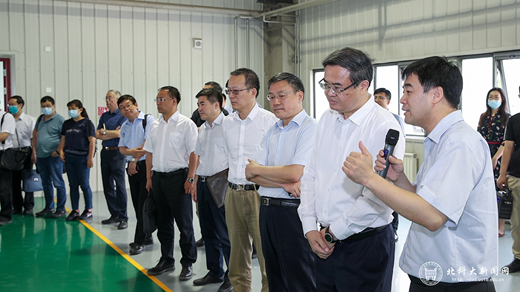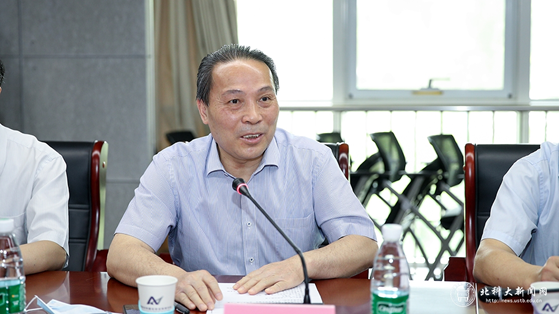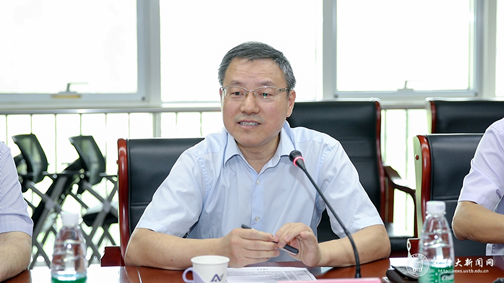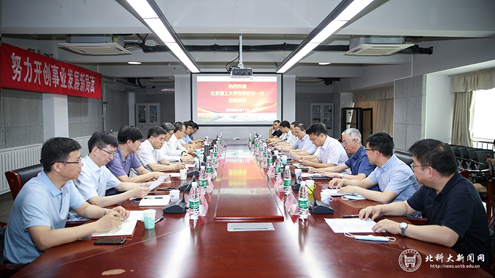President of Beijing Institute of Technology Leads Delegation to Visit Changping Innovation Industrial Park
Release Time: 2020-06-11Views:
On the morning of June 11, Prof. ZHANG Jun, Academician of the Chinese Academy of Engineering and President of the Beijing Institute of Technology (BIT), led a delegation to visit the Changping Innovation Industrial Park of USTB. The delegation was received by Mr. WU Guilong, Chancellor of USTB, and Prof. WANG Weicai, Vice President of USTB.

Prof. ZHANG Jun and his delegation visited the National Center for Materials Service Safety, and toured the research and testing sites for mechanochemistry, multiphase flow, natural atmosphere, high temperature and high pressure, creep test station, etc.

Following the initial tour, Prof. WANG Weicai hosted a meeting between the two sides. Prof. ZHANG Weidong, Director of the Administrative Committee of the Changping Innovation Industrial Park and the General Director of the National Science Center, gave a detailed presentation on the Center, the progress of its work, the development of the National Science Center and plans for its further development, and shared his project design and management experience. Prof. LIN Junpin, Associate Chair of the Department of Materials Science and Engineering and the Chair of the State Key Laboratory for Advanced Metals and Materials, spoke on the Department of Materials Science and Engineering of USTB in regards to its discipline construction, faculty and personnel training, and scientific research.

Prof. ZHANG Jun greatly praised the achievements of the National Center for Materials Service Safety for its accomplishments in promoting the rapid development of the materials science. He then spoke of the development of BIT in becoming a world-class university, and his desire to strengthen cooperative efforts with USTB.

Mr. WU Guilong welcomed the visiting delegation and pointed out that the two universities have a good tradition of cooperation. He continued saying that the day’s exchange would help each side to further understand the other and lay a foundation for strengthening strategic cooperation based on the disciplinary advantages of the two schools. He hoped that the two institutions would continue to maintain close ties in the future, to conduct “point-to-point” cooperation in the fields of materials, electromechanics, and information and automatic control, in addition to planning future in-depth exchanges and cooperative efforts, all while helping each other in the mutual pursuit of becoming “double first-class” universities.



